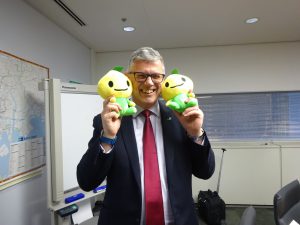
In the ‘Knowledge’ section of ICMIF’s Voice Magazine No. 87, the utilization of cartoon characters by Japanese cooperative insurers became a topic, so we introduce the article with the permission of ICMIF.
A number of cooperative insurers in Japan are using new and
entertaining ways to interact with their members. This new
way of engaging with members is through the use of cartoon
characters which are being used very extensively by a number of
ICMIF’s Japanese member organisations in their marketing and
promotional work.
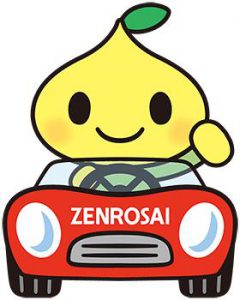
This work is part of a very widespread trend in Japan for kawaii characters, kawaii having the attributes of cuteness and cuddliness, which – along with other related Japanese cultural exports such as manga cartoons and anime animations – are rapidly becoming a worldwide phenomenon. One ICMIF member Zenrosai has come up with a new way of interacting with its
members: it has created a family of kind and friendly fairies, the Pitt family, who live in each member’s house and secretly watch over the humans there to ensure that everyone stays safe and sound.
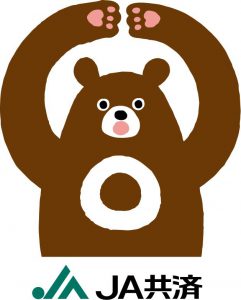
Another member organisation, Zenkyoren (the mutual insurance federation of agricultural cooperatives), has called on the assistance of, among others, Hitonowaguma, a parody or a pun of Tsukinowaguma (an Asian black bear with “Tsukinowa”, a crescent moon on its chest), whose role is to care for the humans who take out their insurance through Zenkyoren.
“Hitonowa” means human circles and bonds in Japanese.
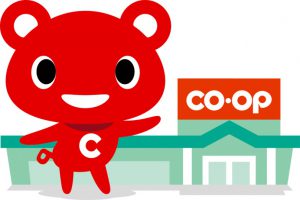
Finally, The Japan Cooperative Insurance Consumers’ Cooperative Federation (JCIF) also makes use of a character Ko-suke in almost all its advertisements.
According to Koji Kawamura, manager of the Public Relations group, within the Sales Department, at Zenkyoren, the cooperative first began using cartoon characters as far back as 1998, when it came up with Go! Anpanman, a cheery round-faced character who was initially used to promote insurance specifically designed for children. Go! Anpanman appeared on TV commercials and novelty promotional products before being promoted in 2007 to become the face of Zenkyoren’s entire range of products. (* Go! Anpanman official portal site)
Perhaps Go! Anpanman’s most important moment was after the Great East Japan Earthquake of 2011 when Zenkyoren arranged for a specially converted Anpanman caravan to travel to the worst affected prefectures (Iwate, Miyagi and Fukushima), offering help and support. Anpanman has also been more widely on tour: as part of Zenkyoren’s Traffic Safety initiative, the character has featured in a stage show performed on a mobile truck which has helped children – and their parents – think carefully about the need for road safety. The show has been seen in over 1200 venues, and has attracted over a million participants.
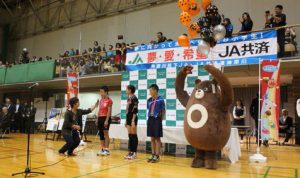
Zenkyoren’s most recent character, Hitonowaguma, was introduced in 2016 and has already been widely used on novelty promotional products and on the smartphone app Line (Japan’s most popular instant communication app). According to Koji Kawamura, the aim behind Hitonowaguma is to increase affinity for Zenkyoren.
Not content with Go! Anpanman and Hitonowaguma, Zenkyoren has three cheery seals (the seal brothers) which it uses particularly to promote the cooperative’s medical insurance.
Zenrosai also has a long history of using cartoon characters. The Pitt family are used in brochures and advertisements, have been turned into stuffed toys and are also available as mascot suits to be
used at events. Not only that, but the fairies are now a feature of the outsides of trains and buses in Japan, where they help promote Zenrosai’s products. According to Toyoaki Nonaka, director, Sales Promotion Department, the Pitt family are designed to appeal particularly to people in their twenties and thirties. “Characters can be a start to enable people to get to know Zenrosai and be interested in us,” he says.
“We think characters help consumers feel close to us, and also differentiate us from competitors.” Zenrosai’s staff are encouraged to decorate the firm’s shops with displays of the characters, to help create a friendlier environment.
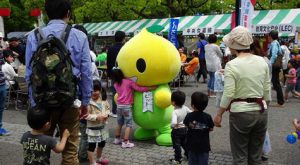
The name ‘Pitt’ comes from a Japanese word game, being similar in pronunciation in Japanese to ‘exact fit’, the idea being that Zenrosai’s products are designed exactly to fit the needs of each of its members. Short animations and videos featuring the family, together with examples of their use in promotional brochures, can be accessed at www.zenrosai.coop/stories/pit.html.
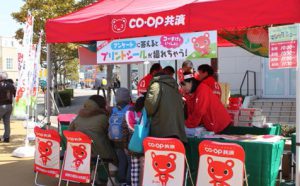
Speaking about JCIF’s use of the character Ko-suke, Kaori Tamanaga from the organisation’s Public Relations group says: “It is so difficult for ordinary people to understand the contents of financial products. Using characters is good for financial services because characters explain them with words that are easy to understand. As financial products become more complicated, characters help us engage with our stakeholders.” She adds that characters are particularly liked by younger Japanese women who are one of the organisation’s main target demographic groups.
The use by organisations of kawaii (cute) characters goes back at least thirty years, with the Tokyo police force establishing its own mascot Pipo-kun in 1987. Both Tamagotchi and Pokémon characters became worldwide hits in the 1990s, and Pokémon Go is now a global success as a smartphone app. For ICMIF members in Japan such as Zenkyoren, Zenrosai and JCIF, there is an obvious value in adopting characters which appeal to younger people. Japan has a rapidly ageing population, and the challenge for all businesses and organisations is to reach out to a new generation of members and clients.
・ Article (PDF) download (303 kB)




